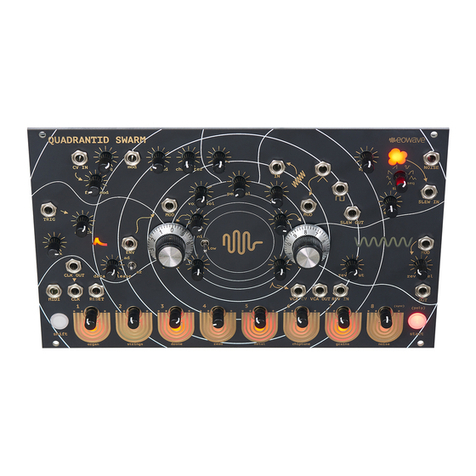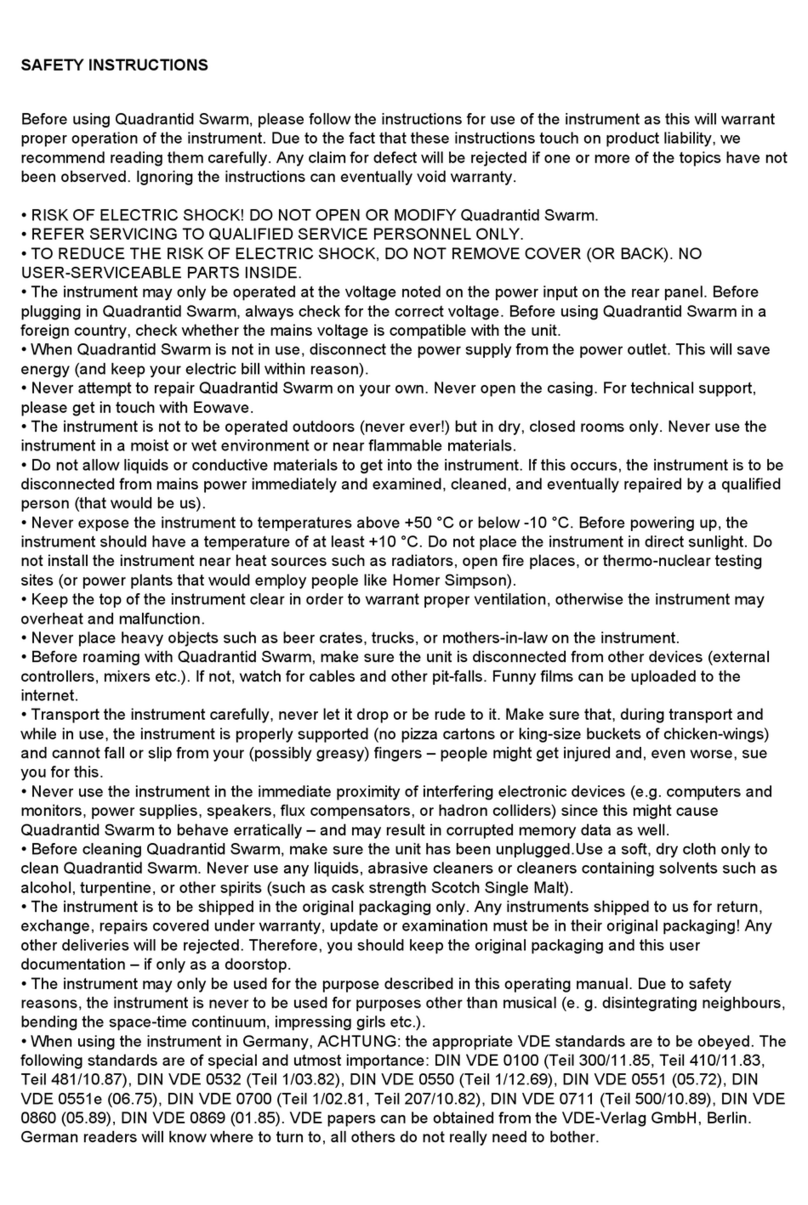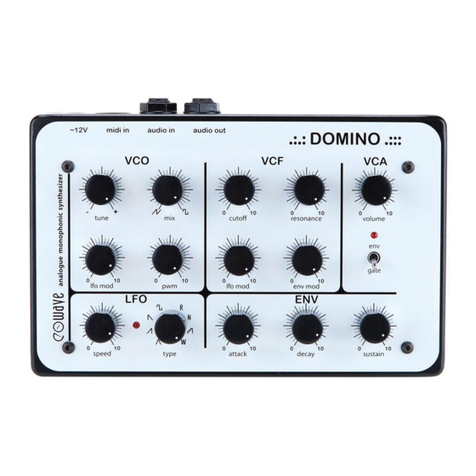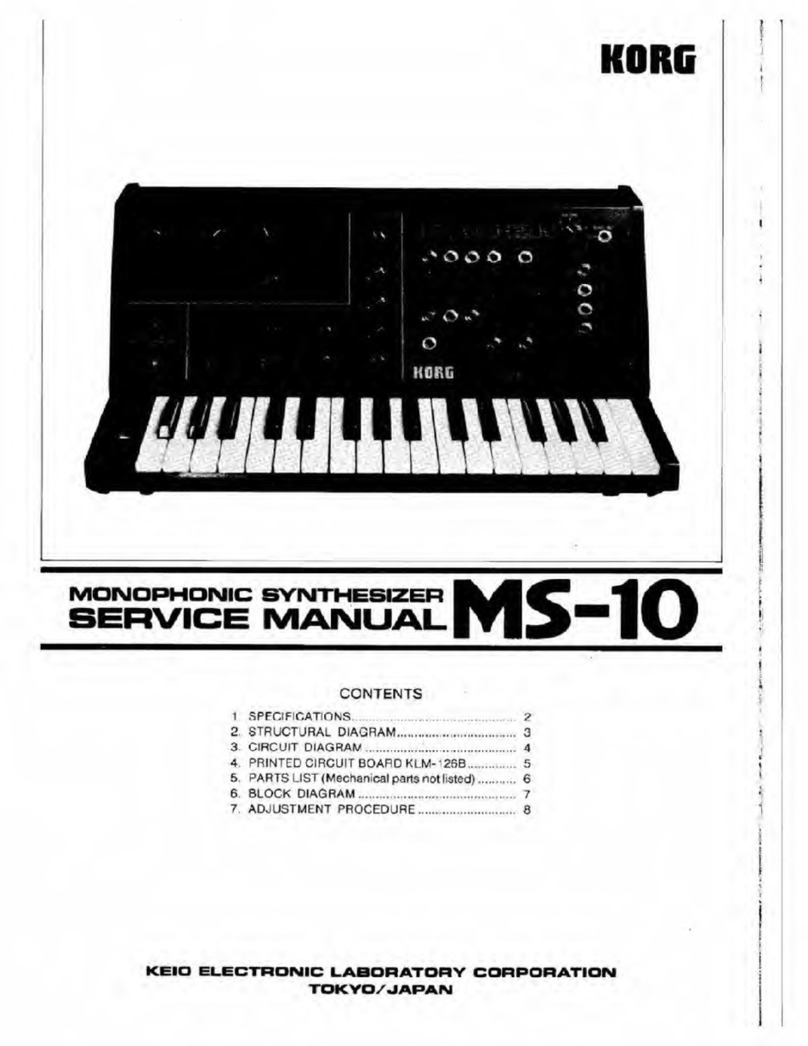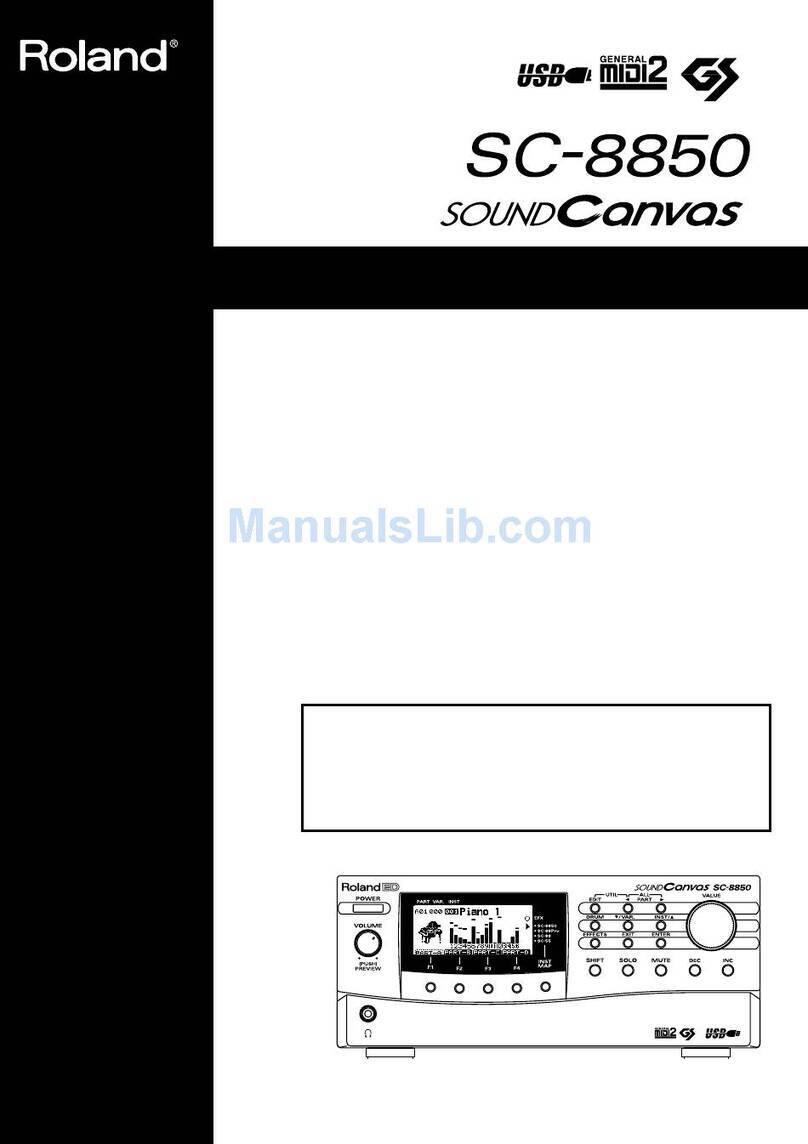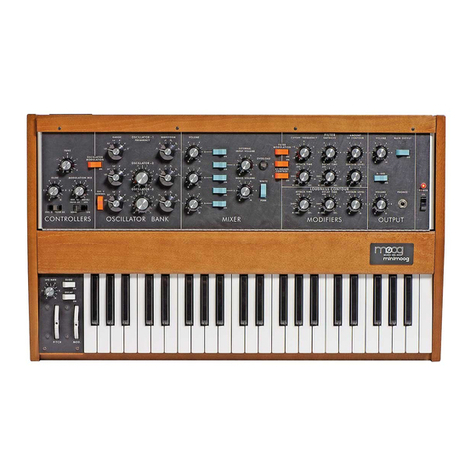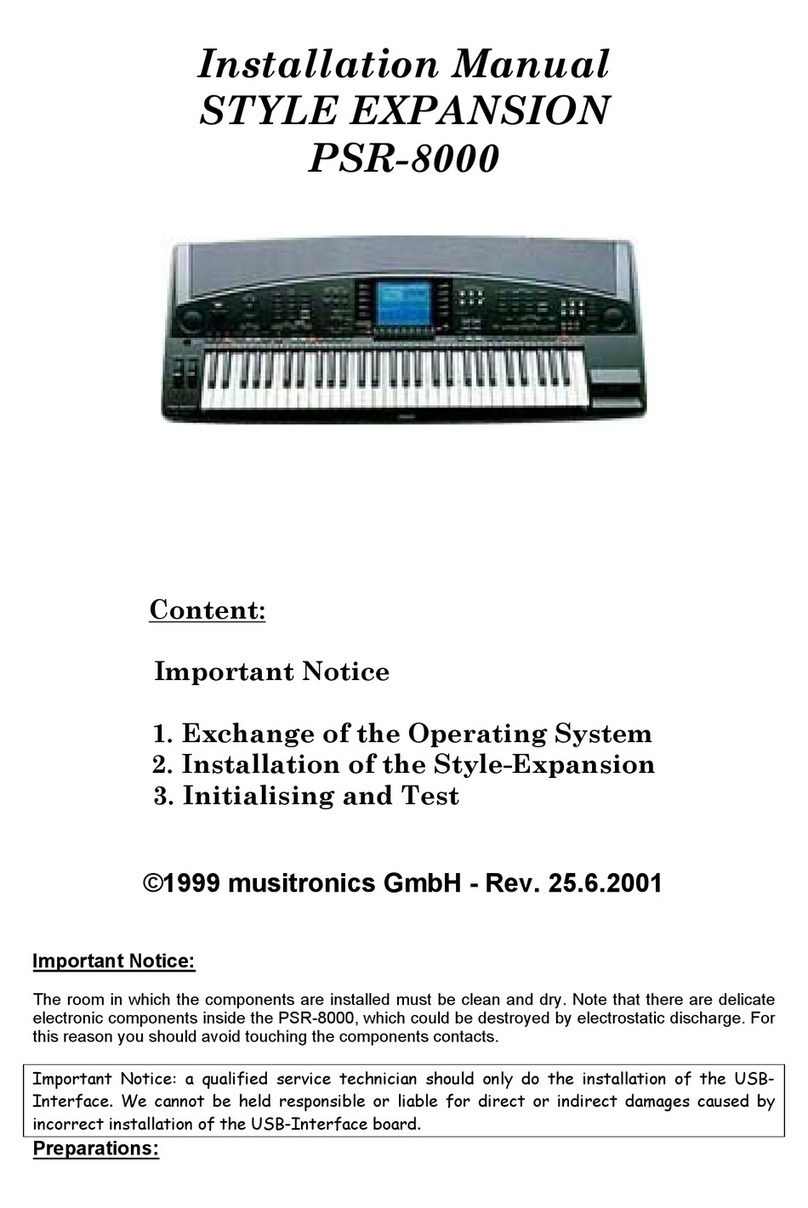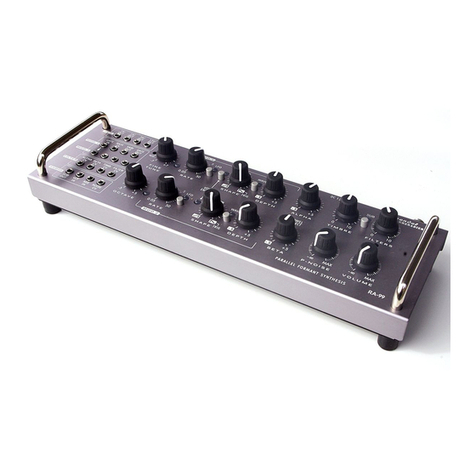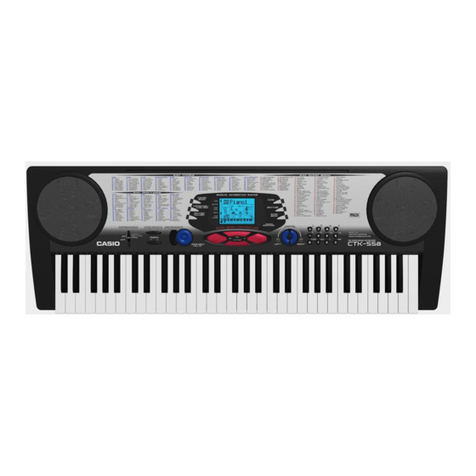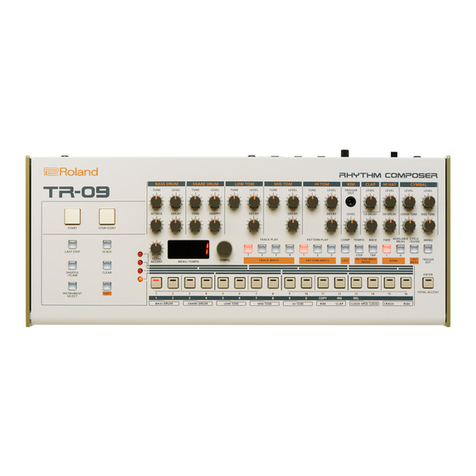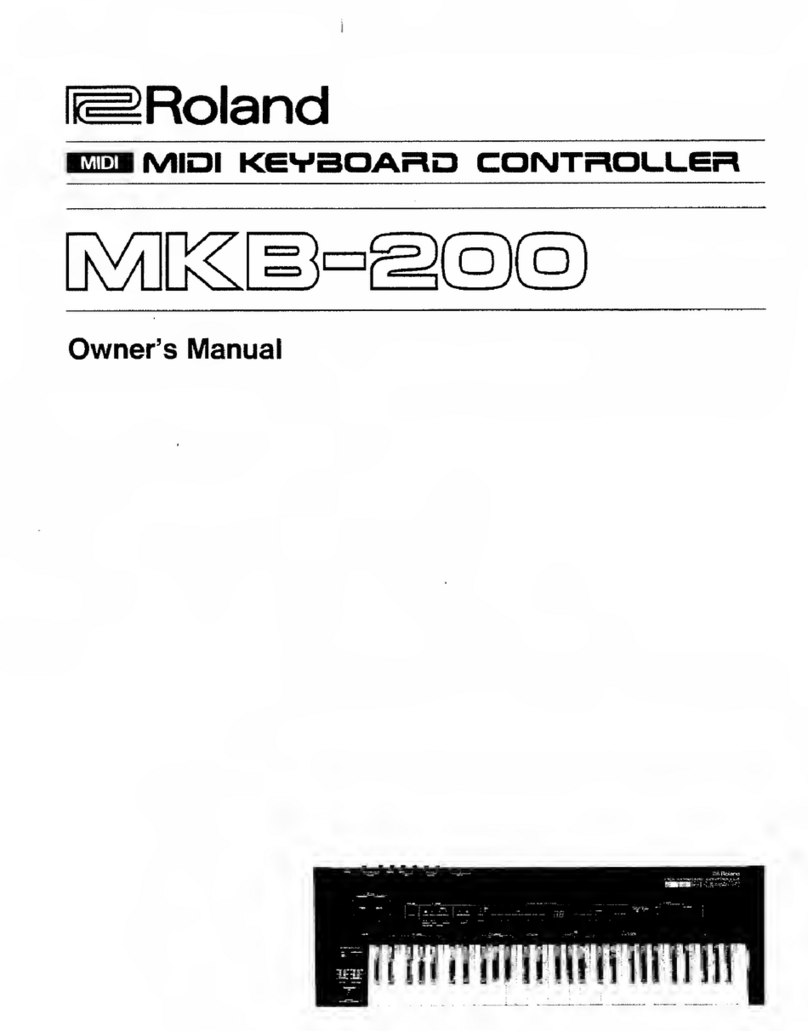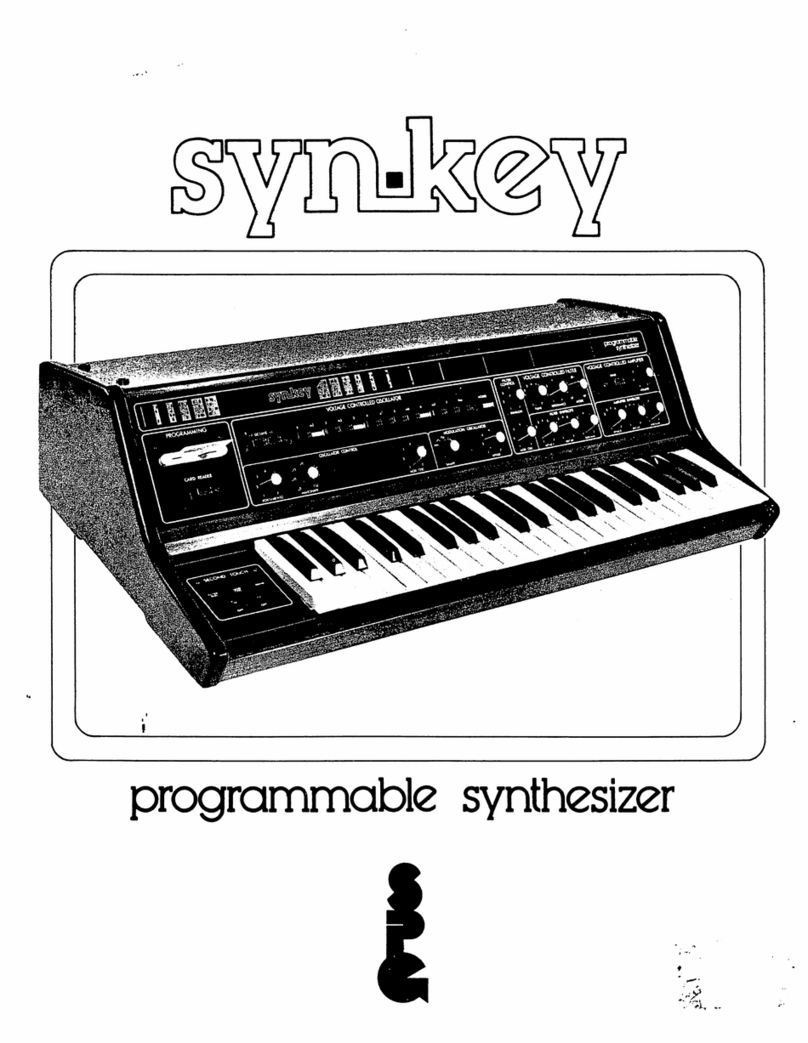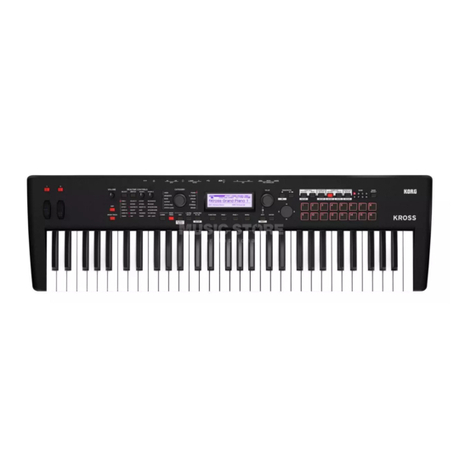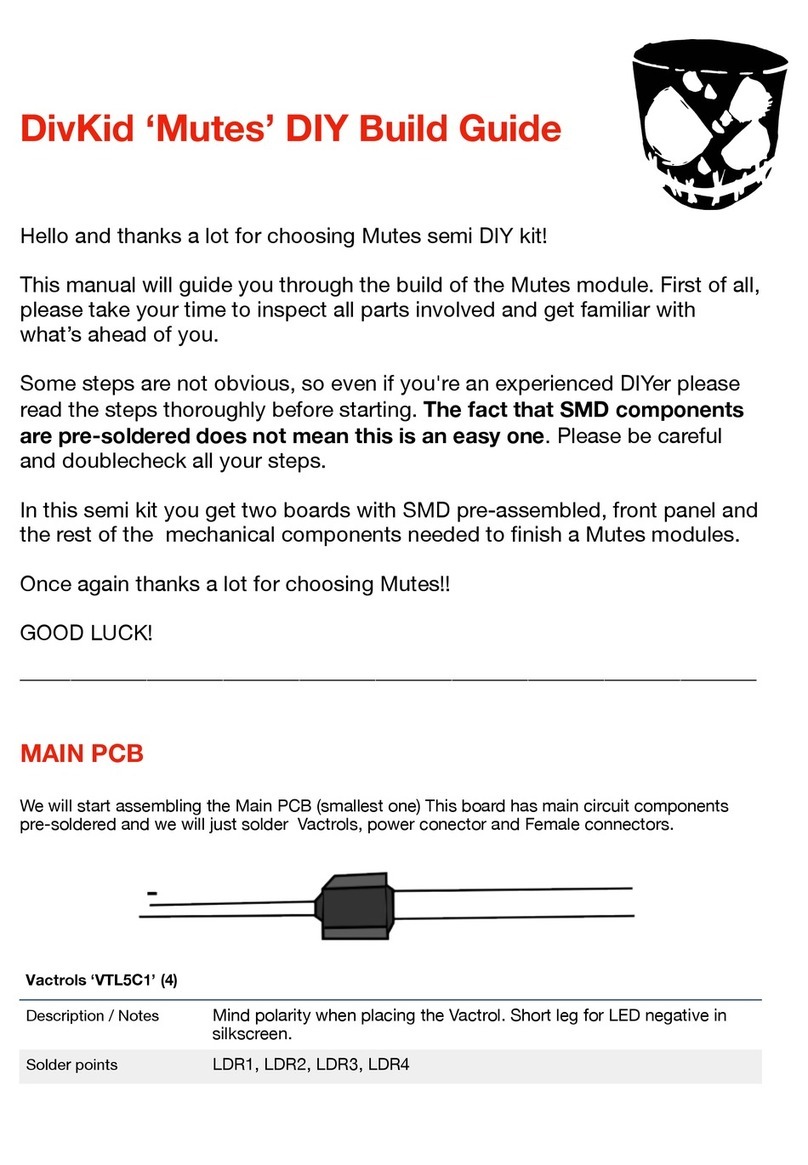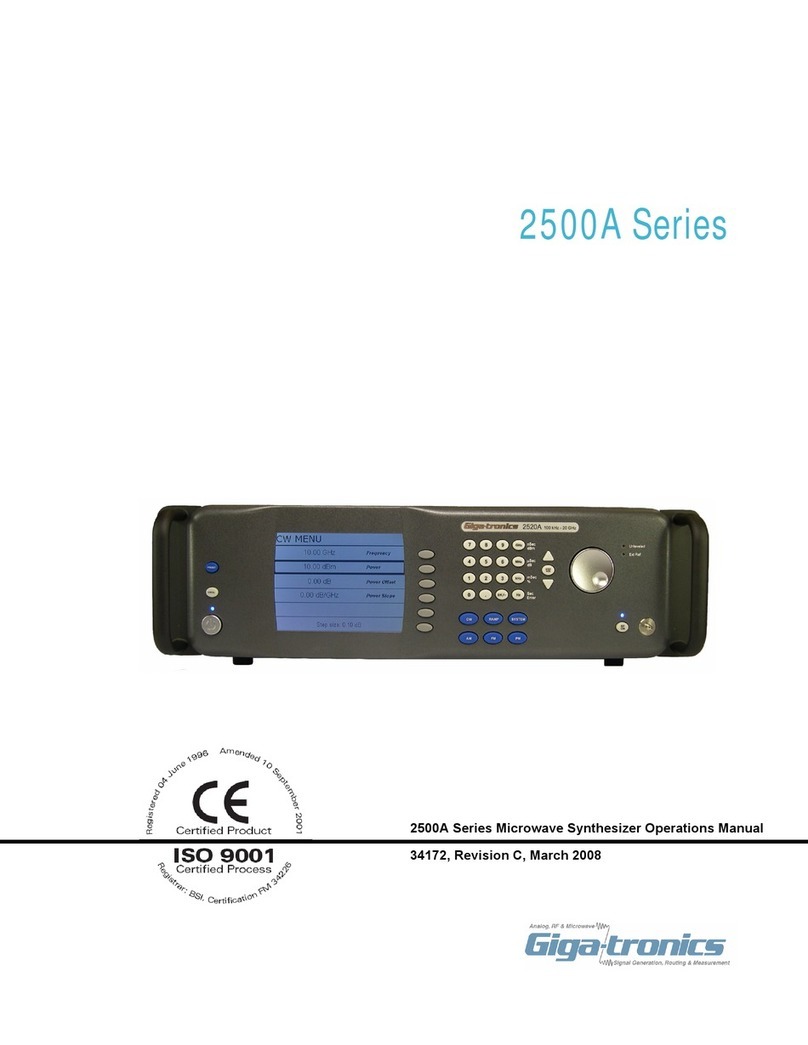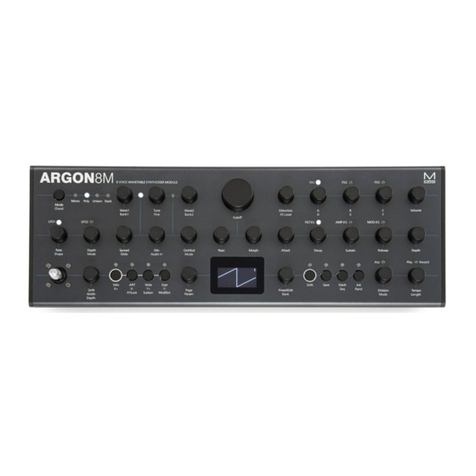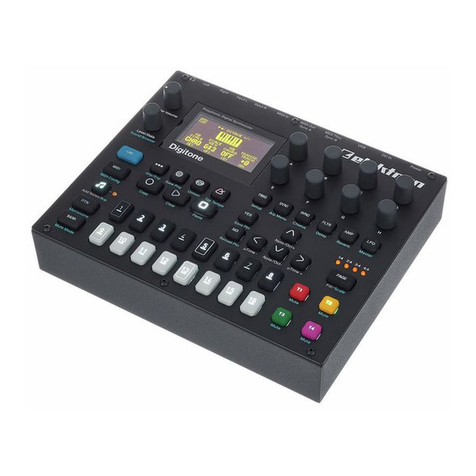Eowave DOMINO User manual


Overview
The Domino is a discrete analog monophonic
synthesizer with a VCO in the tradition of the MS20 and
TB303. VCO, filter and VCA are transistor based, and the
filter is a 24db low-pass resonant filter
Transistor based architecture gives the Domino a
unique sound, simultaneously raw and rich
Features include
• Saw/Square wave VCO
• Low-pass filter
• Decay envelope
• VCA
• Switchable gate/envelope to VCA
• 2 external audio inputs
analogue monophonic synthesizer
CV MIX 1 IN
MIX 2 IN
VCA PWM
F MOD
P MOD
GATE
OUT
f env
decay
mix p mod
f mod
pitch
reson
cutoff
.:.: DOMINO .:::
CV

Interfacing
Basic patching begins at the indicated points
‘CV’ and ‘GATE’ inputs will come from your sequencer,
quantizer, note generator, MIDI module – the device
that you are using to send note information to the
Domino
The switch below the large cutoffknob chooses
between controlling the VCA by gate or envelope – this
should be explored as different approaches to using
your Domino, with satisfying and varied results
The ‘OUT’ jack is the end of the signal chain of the
synthesizer, after the filter and VCA. When the VCA is
not being triggered there will be no output . Use the
OUT jack as your main output if you are using the
Domino as a standard synth voice
analogue monophonic synthesizer
CV MIX 1 IN
MIX 2 IN
VCA PWM
F MOD
P MOD
GATE
OUT
f env
decay
mix p mod
f mod
pitch
reson
cutoff
.:.: DOMINO .:::
CV

Oscillator
Working from left to right as indicated opposite, here
are the controls of the oscillator
‘pitch’ is the tuning control for the oscillator, this is how
you will tune the Domino with the rest of your musical
devices. The tuning on the Domino has a 1 octave
range, and is calibrated to 110hz (A2) in center position.
You can adjust this using the VCO_TUNE trimmer on the
back of the PCB
‘mix’ blends between the saw and square waves, or
between the ‘MIX 1 IN’ and/or ‘MIX 2 IN’ inputs if you
are patching in another sound source
‘p mod’ is the attenuator for the p mod input, it stands
for pitch modulation, but could also be called
exponential fm modulation. This knob attenuates how
much of the modulation source you are sending to the
oscillator
analogue monophonic synthesizer
CV MIX 1 IN
MIX 2 IN
VCA PWM
F MOD
P MOD
GATE
OUT
f env
decay
mix p mod
f mod
pitch
reson
cutoff
.:.: DOMINO .:::
CV

Oscillator continued…
Working from top to bottom as indicated opposite, here
are the controls, input and outputs of the oscillator
‘pwm’ stands for pulse width modulation and effects
the square wave of the oscillator. Patch an LFO, another
oscillator or noise source into this input to modulate the
square wave
‘p mod’ is the input for the pitch modulation. Modulate
the frequency of the oscillator with another oscillator,
LFO or noise source. The symbol to the left of the input
is the envelope symbol of the Domino, showing that
this input is pre-patched to the envelope. Experiment
with the p mod function patched and un-patched.
Hint-
unpatched the p mod can give great sweeps for kick
and tom sounds
Saw and square outputs are found at the bottom of the
module, these are the raw waveforms without the filter
or VCA
analogue monophonic synthesizer
CV MIX 1 IN
MIX 2 IN
VCA PWM
F MOD
P MOD
GATE
OUT
f env
decay
mix p mod
f mod
pitch
reson
cutoff
.:.: DOMINO .:::
CV

Filter
The Domino filter is a powerful tool and can be used
independently from the oscillator by patching another
sound source to the mix 1 and 2 inputs
‘cutoff’ determines the cutofffrequency of the VCF.
Fully clockwise the signal will pass unfiltered, turning
the filter anti-clockwise begins to cut the higher
frequencies
‘reson’ stands for resonance. Turning up this knob
emphasizes the frequency set by the cutoffknob. The
more you increase the resonance, the more electronic
the sound. At high levels the filter will self-oscillate
‘f env’ or filter envelope, attenuates the modulation
from envelope to filter. Essentially, each time the
envelope is triggered the filter is opened up. This is pre-
patched from the envelope. Experiment with decay
level and f env amount with the cutoffturned anti-
clockwise
analogue monophonic synthesizer
CV MIX 1 IN
MIX 2 IN
VCA PWM
F MOD
P MOD
GATE
OUT
f env
decay
mix p mod
f mod
pitch
reson
cutoff
.:.: DOMINO .:::
CV

Filter continued…
From top to bottom…
‘fmod’ is filter frequency modulation, not to be
confused with p mod. The f mod knob attenuates the
modulation you are using to control the cutoff
frequency of the filter
‘F MOD’ is the input to modulate the filter frequency.
The ‘CV’ graphic to the left shows that this is pre-
patched to the CV input. This means that without a
modulation source patched in, the CV level controls the
cutofffrequency – higher notes open the filter, lower
notes keep the filter closed. An LFO patched to the f
mod input is a popular approach to try out
analogue monophonic synthesizer
CV MIX 1 IN
MIX 2 IN
VCA PWM
F MOD
P MOD
GATE
OUT
f env
decay
mix p mod
f mod
pitch
reson
cutoff
.:.: DOMINO .:::
CV

Envelope and VCA
As previously mentioned the switch at the top chooses
between controlling the VCA with the incoming gate
signal, or with the envelope
‘decay’ - the envelope on the Domino is decay only, this
knob sets the length of that decay
‘VCA’ is the input that opens the VCA or voltage
controlled amplifier. The symbol shows that the VCA is
pre-patched from the envelope, but you can patch in an
external envelope to this input if you want more control
of the shape of the envelope on the Domino
At the bottom you will see the envelope output. To
make the Domino as usable as possible in as many ways
possible, you can patch the internal envelope
generated by the Domino elsewhere in your system
from this output
analogue monophonic synthesizer
CV MIX 1 IN
MIX 2 IN
VCA PWM
F MOD
P MOD
GATE
OUT
f env
decay
mix p mod
f mod
pitch
reson
cutoff
.:.: DOMINO .:::
CV
Table of contents
Other Eowave Synthesizer manuals

